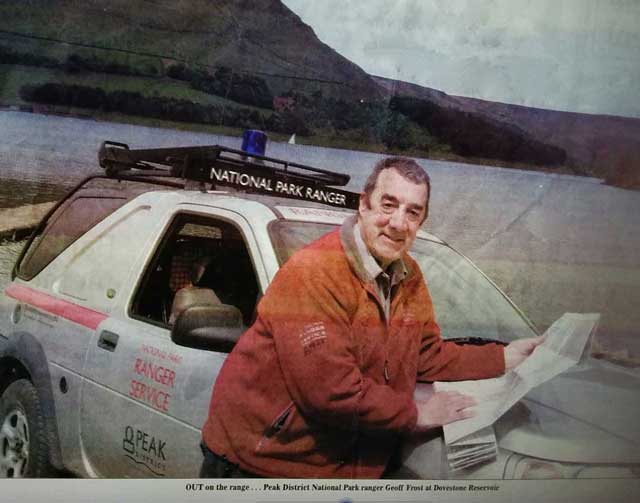In this beautiful but rugged place, attracting thousands of visitors, it’s not surprising that accidents occur fairly often here. Obviously, these range from minor trips or cuts to critical serious accidents which require specialist assistance. Unlike towns, it is often difficult to get immediate help and this is where mountain rescue teams are so important. Working under the auspices of the police the voluntary rescue teams have saved many lives over the years.
What is surprising, especially to many adventurers who visit really remote parts of the world, is how people can become lost and die on land that is so close to villages and towns. But the moorland weather can change quickly and catch out the unprepared if such people cannot navigate or fall ill, perhaps with hypothermia, then their situation can indeed be life-threatening.
Before the advent of mobile phones and sophisticated personal satellite navigation units, the only way hill walkers could find their way around the moors was by using maps and compass – something which still happens today but is made easier by the other technology. Not only that but many paths, especially the Pennine Way, have been made safer by surfacing and where it is now relatively easy to stay on the right path. Before the technology, searching for lost walkers or runners was a regular occurrence. But of course, this hasn’t reduced the accidents which just happen ‘out of the blue’.
Many searches these days are for depressed people and there have been a number of suicides in this area, often suicidal people seek solitude in pleasant surroundings and with this area being close to a large population it isn’t surprising that some come here.
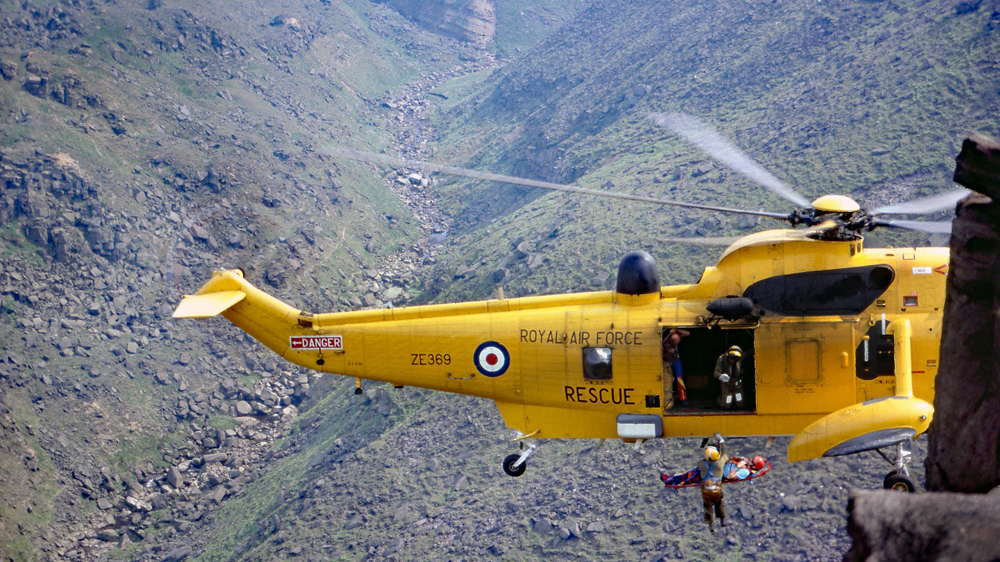
Rescue exercise at Ravenstones.
There’s nothing new about accidents or becoming lost in the wilder parts of this region. Such things happened well over a hundred years ago. In those days searching for missing people was carried out by shepherds, gamekeepers, and local country dwellers. Bringing off an injured person from the moors was a similar thing, with local people helping wherever possible but with equipment that was far below that of today. Rescue teams today, despite being volunteers, are professional and skilled in what they do. Allied with every rescue team are members of the Search & Rescue Dog Association (SARDA) and their highly trained dogs which can prove invaluable in searching for people, especially in large areas of open countryside.
The seven mountain rescue teams in the Peak District National Park are affiliated with the Peak District Mountain Rescue Organisation (PDMRO). This organisation was formed in 1964 to bring a central point of contact for the police. The teams are spread throughout the National Park and can be asked to work anywhere although it is usual for the most local team to be called out first. In the Dovestones area, the local team is Oldham Mountain Rescue Team (OMRT) and it’s well worth having a look on their website – also see the video of Oldham MRT under the AVALANCHE tag.

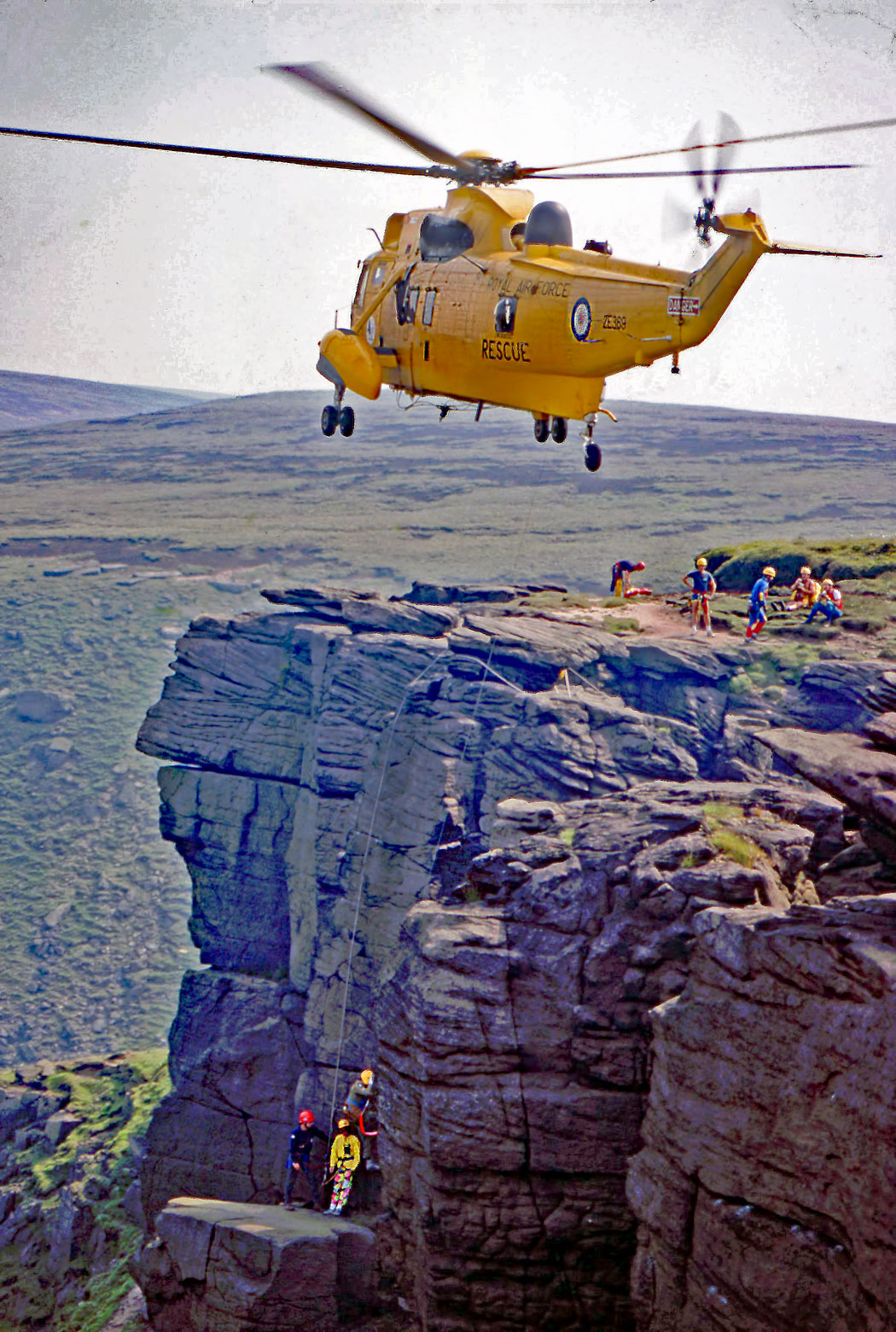
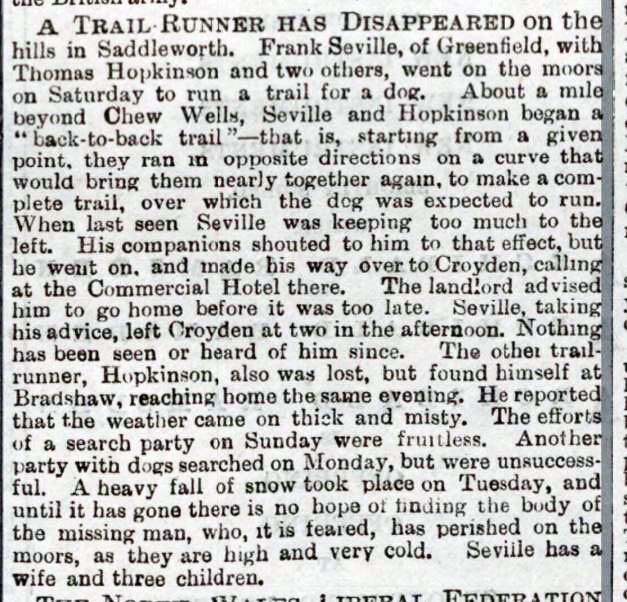
Leeds Times 18th Dec 1886 – with the kind permission of British Newspaper Archives
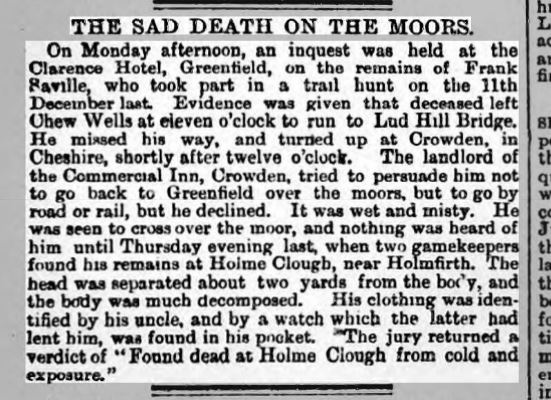
Yorkshire Post 30th July 1887 with the kind permission of British Newspaper Archives
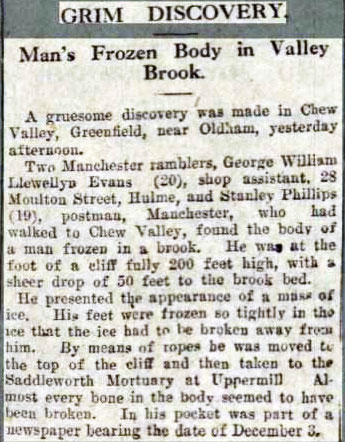
Aberdeen Press and Journal 25th February 1929 – kind permission of British Newspaper Archives
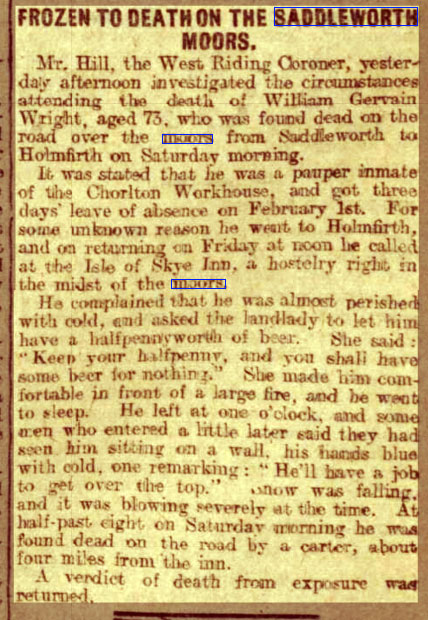
Leeds Mercury 7th January 1906 – with the kind permission of British Newspaper Archive

The Evening News 13th Dec 1935 – kind permission of British Newspaper Archives

